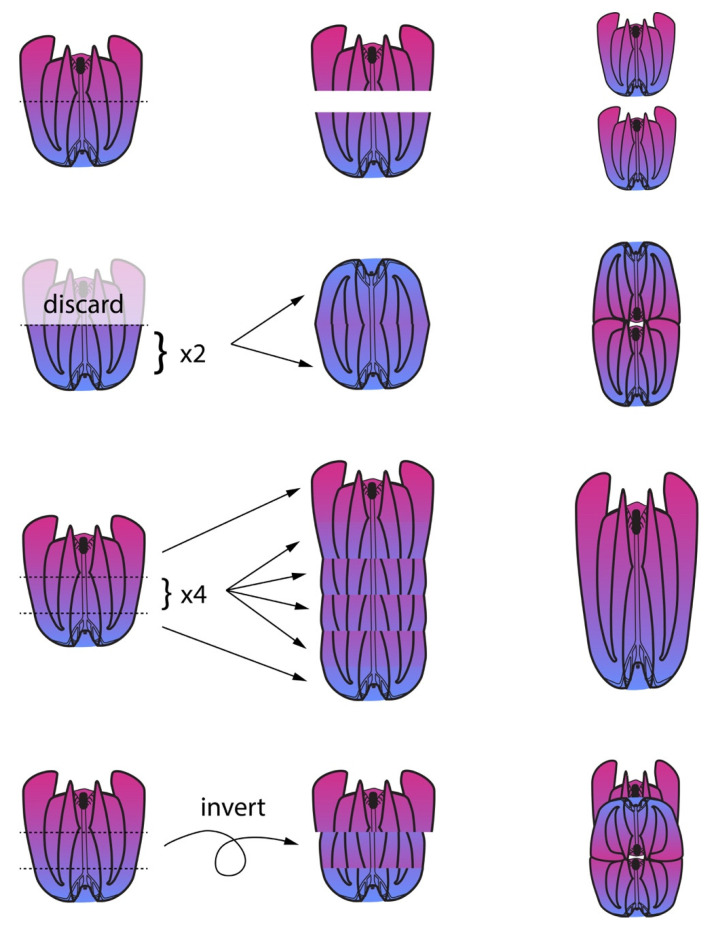Figure 4.
Cut-and-paste grafting experiments by Coonfield show that the oral–aboral axis is stably determined in adult ctenophores. Top row: animals bisected equatorially regenerate into two normally patterned animals. Second row: when two aboral halves are grafted together, both retain their original polarity. Each half grows new oral tissues such as mouth and lobes and the animals are fused at the oral region. Third row: when animals are cut into thirds and a series of middle pieces from different animals (four individuals in this case) are grafted in their native orientation with one apical and one oral piece, the animal regenerates to have a single common oral–aboral axis. Fourth row: when animals are cut into thirds and the middle piece is inverted on the oral–aboral axis, all three pieces maintain their original polarity (although the oral piece may not regenerate a new apical organ.

